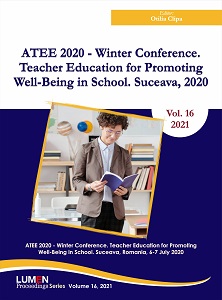Interactive Multi-Sensory Environments for Children with Autism Spectrum Disorders
Interactive Multi-Sensory Environments for Children with Autism Spectrum Disorders
Author(s): Vytautas Žalys
Subject(s): Inclusive Education / Inclusion
Published by: Editura Lumen, Asociatia Lumen
Keywords: interactive audiovisual technologies;ASD;sound;
Summary/Abstract: The emerging of digital technology not only encourages the development of new tools but also changes traditional approaches to solving emerging problems. The sound, music, art, colors, etc. that prevailed in the 20th-century forms of therapy are being replaced by integrated systems that overcome many of these forms, thanks to digital technology. With the increasing number of people with autism spectrum disorder (ASD) in the world, such systems provide new opportunities for the treatment of these disorders. In this research, the creation of such a system has been chosen as the object of work. The article presents an interactive tool for the education of children with ASD created by audio, video, and computer technologies and assesses its potential impact. The experimental research and its results are presented. This study aims to evaluate an interactive instrument developed for the education of such children. Following the objectives of ensuring the interactivity of the process, provoking all the perceptions of the subject, and developing the subject's ability to respond to the environment, a personalized audiovisual environment was created. For interactivity, the virtual program EyeCon, Webcam and camcorders, video projector, and speaker system were used. The study was conducted with one subject and a case study method was used. The impact of the instrument was established based on a survey of the parents of the child and the findings of childcare experts. The results of the study demonstrated the positive benefits for this child such as increased eye-to-hand coordination, concentration duration, improved communication, and emotional expression. The results obtained show that such interactive multi-sensory environments in special and general education schools can be a supplemental tool for traditional methods.
Book: ATEE 2020 - Winter Conference. Teacher Education for Promoting Well-Being in School. Suceava, 2020
- Page Range: 568-587
- Page Count: 20
- Publication Year: 2021
- Language: English
- Content File-PDF

